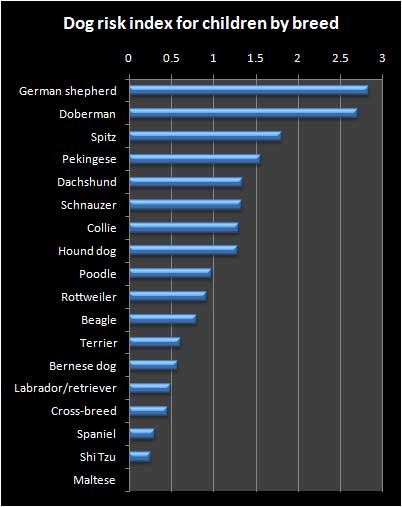Sat 14 Nov 2009
Are Some Dog Breeds More Dangerous Than Others?
Posted by Christian Donner under PetsComments Off on Are Some Dog Breeds More Dangerous Than Others?
As a new dog owner since last week (we rescued a yellow lab mix puppy), a recent fatal dog bite incident in Austria caught my attention. The incident involved a Rottweiler and a 1-year old child. Apparently the dog saw a threat in the child when the father returned from work and the family rushed to greet him.
Almost all of the ensuing flood of press coverage cited a study by a group of Austrian pediatricians in collaboration with a research center for childhood acidents. This study was published in Pediatrics in 2005 and contains some interesting data (PDF version of the publication).
The authors analyzed 341 dog bites in children up to 16 years old. To quote from the abstract:
The annual incidence of dog bites was 0.5 per 1000 children between 0 and 16 years of age. Incidence was highest in 1-year-old patients and decreased with increasing age. The relative risk for a dog attack by a German shepherd or a Doberman was 5 times higher than that of a Labrador/retriever or cross-breed. The vast majority (82%) of the dogs were familiar to the children. Most (322; 94%) of the children had injuries to 1 body region; in the remaining 19 (6%) children, up to 3 body regions were injured. Of 357 injuries, the face, head, and neck region was the leading site affected (50%). Inpatient treatment was required in 93 (27%) patients.
The most interesting result, in my opinion, is that the authors were able to establish a risk index by breed, based on the representation of dog breeds in the cases that reported to the emergency room, and dog license numbers obtained from the local authorities. They identified the German shepherd as the most dangerous breed, followed closely by the Doberman:
According to the study, the risk of a child getting bitten by a German shepherd is more than 5 times higher than by a lab. The study also established data for circumstances and behavior that led to accidents. It is worth reading. Again, here is the link.
